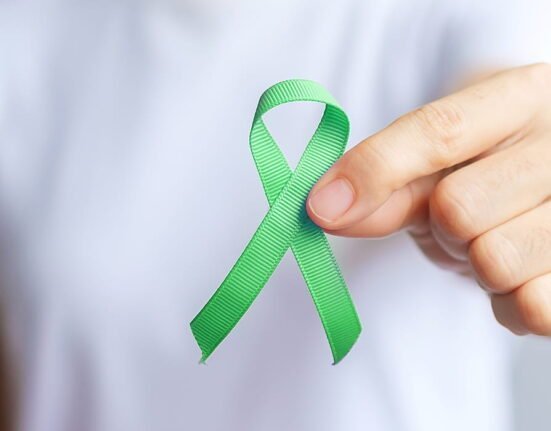The condition when breasts do not match is a common issue. Research has proven breast asymmetry to be common in females because all women show some degree of difference between their breasts. Notably, breast variations between the two breasts often lead people to experience emotional distress and self-consciousness that complicates their body image.
The experience of emotional distress from breast asymmetry affects many other women who share this situation. You can recover your self-assurance and ease emotional turmoil through methods that allow you to develop a wholesome body-love relationship. The following article provides practical solutions for addressing emotional concerns related to breast asymmetry, including the use of asymmetrical bras.
Understanding the Emotional Impact
The widespread body positivity message collides with cultural body standards, making physical differences appear wrong or alienating to many individuals. A patient dealing with breast asymmetry often experiences various emotional responses, which include:
- Embarrassment, together with shame, arises when a person tries to wear specific swimwear pieces or particular clothing.
- Anxiety about intimacy or relationships.
- Low self-esteem and negative body image.
- Hidden internal challenges arise when you avoid social interactions to escape negative opinions from others.
These emotions are valid. Recognising these emotions serves as our initial move towards recovery.
Step 1: Challenge Perfection Myths
Internalising the myth that bodies, along with breasts, always need to be symmetric presents a major challenge for many individuals. Perfect symmetry exists rarely, and it does not represent the normal condition. The bodies of well-known models and celebrities with asymmetry often remain unnoticed due to customised clothing, poses and photo editing techniques.
Action Tip:
Recognize the importance of following accounts that showcase bodies with diverse representations through social media. Exposure to natural human bodies of all shapes and forms helps establish that each person has their unique features, rather than being imperfect.
Step 2 Requires Direct Sharing of All Your Feelings
Restraining emotions will cause your distress to build up in intensity. Sharing psychological concerns with trusted friends or therapists or joining support groups makes the body image problems more manageable to deal with. People will understand your feelings better than you anticipate when you discuss your experience with others.
Therapeutic Benefits:
- Validation of your experiences.
- New coping strategies and support.
- Decreased isolation and loneliness.
- The elimination of self-hatred and secrecy through communication about body image problems decreases emotional distress levels.
Step 3: Explore Practical Solutions
Physical solutions that enhance confidence are most effective in social contexts when they provide quick relief to emotions that require immediate acceptance.
a) Asymmetrical Bras
The use of asymmetrical bras serves as a practical solution for women with different breast sizes, as these bras are designed to provide a proper fit. The bras include padding accessories that adjust to fit the breast area, providing discreet support for balanced breasts.
Benefits of an Asymmetrical Bra:
- The appearance becomes balanced with the symmetric standard.
- Reduces self-consciousness.
- These bras provide personalised breast support, enhancing comfort for users.
Specialty lingerie shops sell asymmetrical bras, but you can also have a bra made to fit your body perfectly.
b) Other Options Include:
Silicone inserts, also known as “chicken cutlets,” are used to even out the appearance. Try adding drapes to your outfits to feel comfortable and avoid unwanted attention to your breasts. Lightly padded bras function to shape both breasts uniformly. The use of these tools expresses self-respect by granting yourself comfort and confidence. Embracing body neutrality, along with self-compassion, represents the fourth step in developing self-love practices.
Body positivity seems intimidating to people who need more time before celebrating their body rather than hating it. The concept of body neutrality serves as a bridge for individuals who want to respect their bodies even when they do not need to love all aspects of their physical form.
Body Neutral Affirmations:
- My values are separate from how others perceive me.
- I feel appreciation for the opportunities my body offers to me.
- Having mixed emotions about your body is something you can accept without judgment.
- You should treat yourself with kindness rather than criticise yourself when difficult emotions emerge. State encouraging messages to yourself that a faithful companion would need during times of similar trials.
Step 5: Focus on Whole-Self Identity
Breast asymmetry is a single aspect of your overall identity, which should not dictate your sense of self. You consist of your talents, alongside your kindness, humour, creativity, and personal ambitions. Other aspects of your identity that you strengthen will reduce your excessive attention to physical looks. Activities to Strengthen Whole-Self Identity:
- Volunteer work
- Creative pursuits (painting, writing, dancing)
- Professional development and career goals
- Establishing loyal friendships while creating supportive relations between people
- Physical insecurities diminish as your self-worth stems from various legitimate sources.
- If you require assistance in this matter, consult a professional.
Seeking therapy from professionals specialising in body image matters becomes essential when emotional concern causes serious mental health problems and depressive symptoms or interfere with daily activities.
Therapeutic Approaches That May Help
The patient can change harmful thought patterns through the therapeutic implementation of Cognitive Behavioral Therapy (CBT). Body acceptance becomes more achievable through the application of Acceptance and Commitment Therapy (ACT).
Group Therapy for Peer Support and Shared Healing
You display real strength by accepting assistance, as it shows you understand your need for help, although others might view it as a weakness.
Conclusion
The emotional difficulties caused by breast asymmetry do not determine either your personal worth or the level of your joy in life. The healing process involves learning about perfection myths and testing asymmetrical bras, as well as practising compassion for oneself and understanding who we are beyond our physical form. Addressing emotional and physical needs enables you to develop a resilient, confident self while becoming aware of hurdles, but breaking free from their boundaries. Each person possesses their own special body form, which deserves celebration in its entirety.













Leave feedback about this